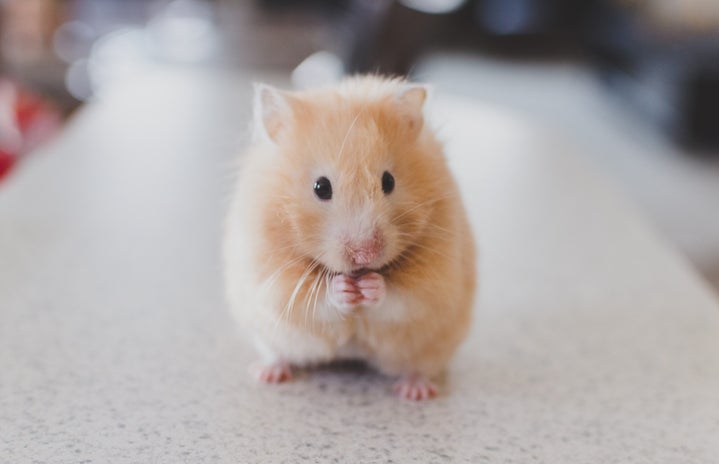Small, cute and fluffy. All have been used to describe the loveable little creatures that many of us had through our younger years of middle school or better yet the ones we were jealous of our friends for having when we went to their houses.
Hamsters, rabbits, rats, guinea pigs and many more- these small pets have always been a staple of pet stores and young children, but as it turns out, a lot of what we currently know about their care and health is completely and totally false!
Here I’m going to try and debunk some of the myths, misconceptions and just plain old misunderstandings of there small pets that people see around them.
1. These animals can live in small cages!
No, this statement is entirely and completely false. For one, many of these rodents are scavengers and foragers, meaning that in the wild they travel many many miles in order to feed themselves. That means that a tiny cage that pet stores commonly try to sell you is improper and many times below the standard cage size needed for these animals.
Imagine, for a moment, that you live in your bathroom for 24 hours of the day, with maybe an hour outside it. You’d go insane. These animals do as well. From ‘monkey baring’ where rats and hamsters try to climb bars on their cage and chewing on the bars, these actions have very negative impacts upon your pet’s mental state.
Rabbits are to be more considered the same as the family dog or cat. They can be litter trained, but they need space enough to travel the household in free-roaming.
Time to end the stereotype that small animals require small cages.
2. These pets are great starter pets (easy/cheap pets)
This statement implies a lot of things and hides many truths of the situation you can find yourself in with these animals. The most common being that they are cheap to keep.
Nope! If anything, these animals can cost MORE than your average cat or dog due to unexpected vet needs. Many of these animals are bred in breeding facilities where they are mass-produced; which obviously entails many genetic issues.
Due to them being a smaller pet, some believe that they do not entail the need for regular check-ups or vet visits. Not only do they cost in vet visits, but they also have basic start-up costs which can be well into the hundreds of dollars for food, proper cages, toys, hides, chews, wheels and much more.
3. These animals need friends/can be alone
Depending on which furry creature catches your eye, you should know that depending on the species they can require the need for social interaction with members of the same species. Or, they need to be more solitary animals.
Rats, for instance, can become depressed if left by themselves and require one or more friends. Guinea pigs seem to be one of the animals most left alone, but this is detrimental to your guinea pig’s health!
Hamsters, on the other hand, are best left as solitary animals. Due to their territorial nature, they require ample amounts of space and for it to be their own. The last thing you want is for your animal to fight and get injured or worse.
4. These pets are stinky/ have an odor.
I’ve heard a lot of discussion about how people who are interested in purchasing or adopting a small pet like these are only dissuaded by the ‘smell’ that they believe these animals have.
Any animal that you own has a small, or a natural scent to them. Cats, dogs, horses, rabbits and more. They all have a smell. The apparent bad ‘odor’ that people connect with rodents, though, is mainly due to lack of care. For your animal not to smell you should spot clean their cages daily.
These animals all are highly hygienic. They bathe themselves much like cats are held in high esteem for, and a few of them can even be bathed in water. Rats and guinea pigs can be bathed but it should be rarely done. If wet, these animals can get ‘chilled’ or too cold to maintain their body heat and die.
Hamsters, rabbits and similar fur rodents require dust baths! Never wet your rabbit or hamster, their fur and body types are not meant to be waterlogged.
5. These animals aren’t happy, don’t show emotions, or are ‘evil.’
Strange, or maybe not strange, it is common for people to assume that rodents or small pets don’t have emotions, connections to their owners, or that they are plain evil.
Let me break some of this down, picture that you’re an animal like this, built to be a prey animal, seeing something with sharp teeth constantly putting you near their mouth. It’s frightening. These animals require time to adjust to you, and it takes baby steps in allowing them to trust you and gain confidence in the idea that you are not there to eat them.
Once they begin to open up you’ll start to enjoy all of the little ways that their personalities shine.
Rats, when happy do actions called ‘bruxing’ and ‘boggling’ where they chatter their teeth and their eyes wiggle. It’s weird I know. But they’re showing that their happy and who can complain about that.
Guinea pigs and rabbits do a similar sort of ‘hop’ motion. Rabbit owners call it a ‘rabbit binky’ where they jump and twist their bodies in a little dance and its pretty similar to a dog who has the ‘zoomies’. Guinea pigs do an action called ‘popcorning’ because of the exciting little hops that their fat little bodies make.
Want to see more HCFSU? Be sure to like us on Facebook and follow us on Instagram, Twitter and Pinterest!




